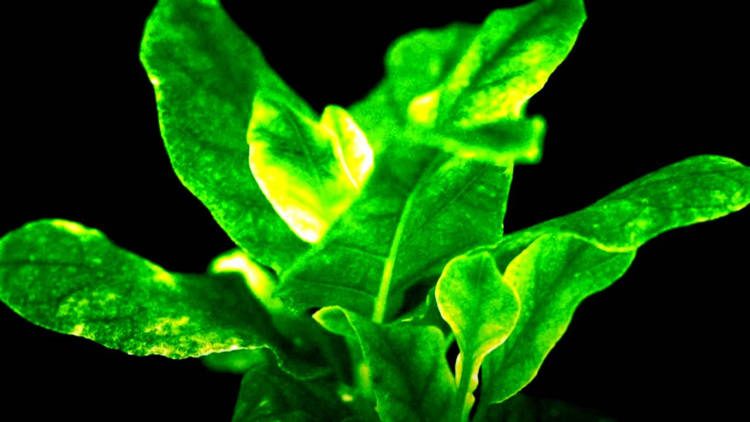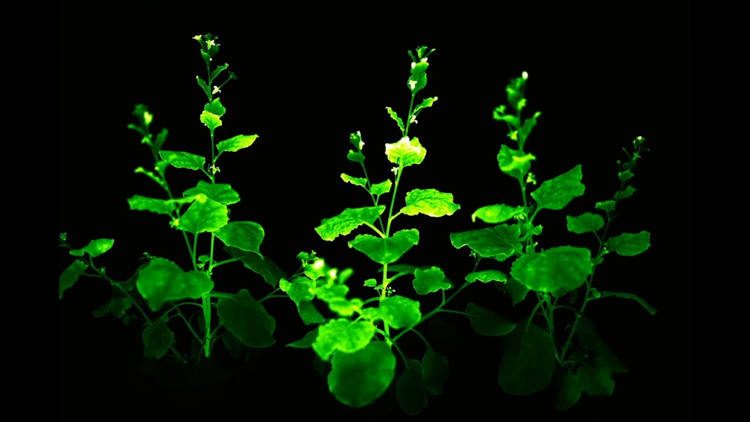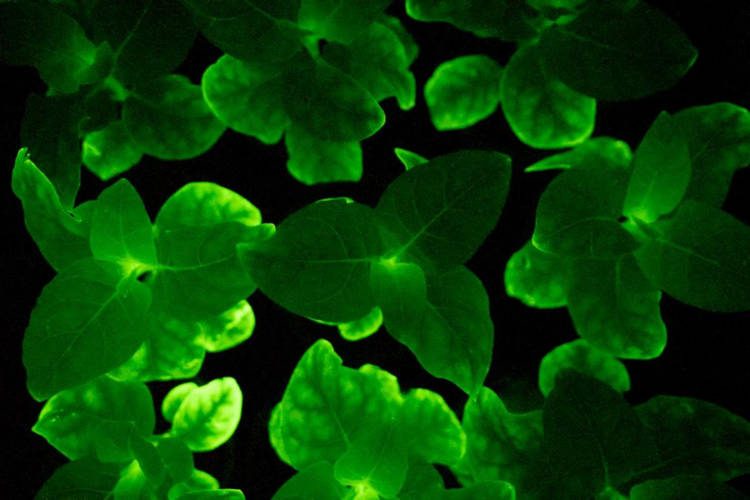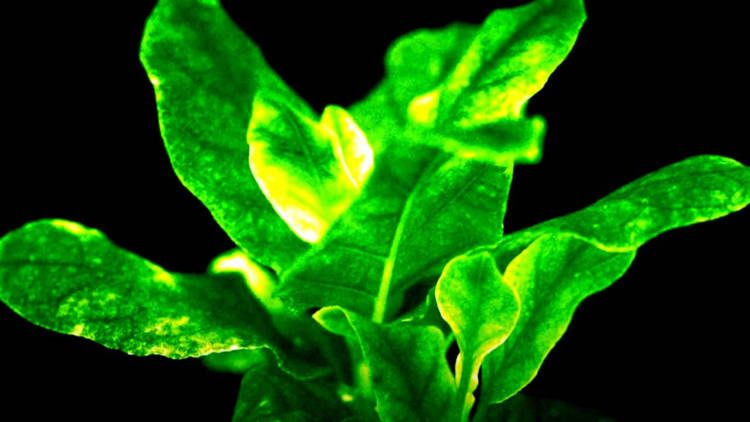Stunning-looking luminescent plants have become popular in science-fiction and fantasy films in recent years, but if the recent achievement of an international team of scientists is any indication, self-sustaining bioluminescent plants are already a reality.
In 2017, MIT researchers announced an important breakthrough in their quest to make plants that glow in the dark a reality, but their Plant Nanobionics only made watercress leaves dimly glow for about 3.5 hours. Late last month, a team of 27 scientists published a groundbreaking study documenting their ability to genetically tweak virtually any type of plant and make it sustainably luminescent throughout its entire life cycle. By inserting DNA obtained from bioluminescent mushrooms into the DNA sequence of plants, they managed to create plants that glow orders of magnitude brighter than previously possible.

Photo: Planta LLC/YouTube
The project was carried out by an international team of scientists led by Drs. Karen Sarkisyan and Ilia Yampolsky, and funded by Planta LLC, a Russian biotech startup based in Moscow, which seeks to commercialize glowing plants. While glowing plants and trees capable of replacing street lights are still a fantasy, the results obtained by the 27 scientist may soon translate into commercially available decorative plants.
The breakthrough was inspired by one of last year’s most intriguing discoveries, the parts that make sustainable bioluminscence in mushrooms possible. Although mushrooms and plants are technically not closely related to plants, the same organic molecule that produces light in mushrooms – caffeic acid – is also found in the cell walls of most plants. To replicate the mushrooms’ luminescence in plants, scientists had to also replicate a metabolic cycle involving caffeic acid and four enzymes.

Photo: Planta LLC/YouTube
According to the study published in the scientific journal Nature, the genetically modified plants emitted more than a billion photons per minute, achieving a “self-sustained luminescence that is visible to the naked eye”. Using ordinary cameras and smartphones, the scientists recorded a pleasant green glow coming from leaves, stems, roots, and flowers.
Scientists noted that “young shoots were brightest at the terminal and axillary buds and at the upper part of the stem; older parts of the shoot dimmed as plants matured,” adding that the intensity of the bioluminescence can also be influenced by environmental factors such as a banana peel, due to the ethylene growth hormone it emits.

Photo: Planta LLC/YouTube
Tobacco plants were used for this particular experiment, but only because of their simple genetics and rapid growth. Scientists claim that bioluminescence has already proved feasible with for other plants, including periwinkle, petunia, and rose, and that further experimentation will likely result in even brighter plants.
Fans of the otherworldly flora in James Cameron’s ‘Avatar’ will be happy to hear that Planta LLC. and its collaborators are already working on other features, such as plants changing brightness or color in response to people and surroundings.













